Sobre nós
A Olaria de Porches é uma pequena olaria da região do Algarve, em Portugal. Somos uma equipa de artistas que pintam cerâmica à mão há mais de cinquenta anos. Visite-nos para descobrir a cerâmica produzida localmente, encontrar o presente perfeito, ver a cerâmica a ser pintada e almoçar no nosso café.
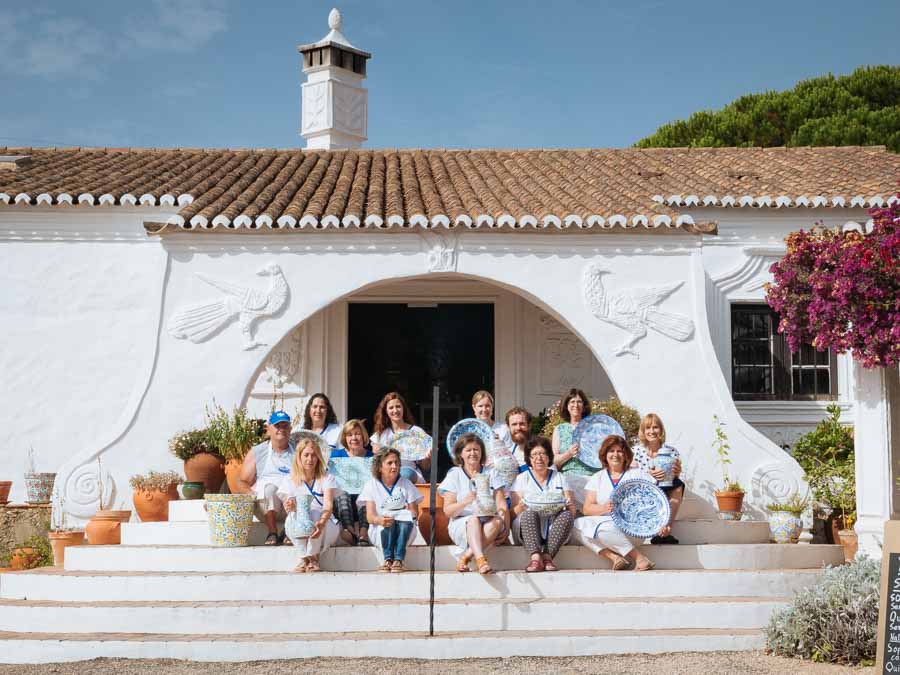
Onde posso encontrar-vos?
A Olaria de Porches é uma pequena olaria situada num edificio no estilo duma quinta tradicional nos arredores da pequena aldeia de Porches. Estamos na província mais a sul de Portugal, o ensolarado Algarve. Estamos abertos durante todo o ano e quando visitar a nossa olaria é provável que nos veja pintando peças de cerâmica. Temos também um lindo café no nosso jardim, chamado Bar Bacchus, onde poderá desfrutar de um almoço ligeiro rodeado por bonitos paineis de azulejos.
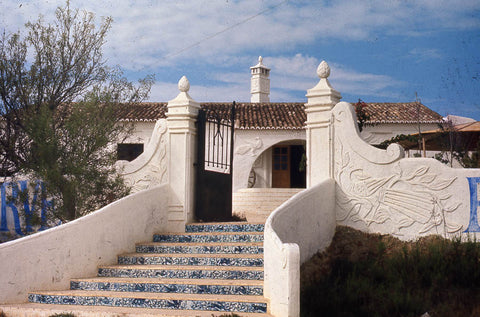
Quando é que tudo começou?
A Olaria de Porches foi fundada há cinquenta anos, em 1968. Foi a visão de dois artistas de renome, Patrick Swift e Lima de Freitas. Viram que o turismo trazia grandes mudanças ao Algarve e no tumulto perdiam-se as antigas tradições artísticas que tanto amavam. Como artistas, sentiram que tinham que fazer alguma coisa e decidiram começar a sua própria olaria. Surpreendentemente, nenhum dos dois jamais tinha feito trabalhos em cerâmica na vida! Swift escreveu mais tarde que a ideia deles de reviver a indústria local de olaria era “tão imprudente que, olhando para trás, não sei como tivemos a ousadia de começar”.
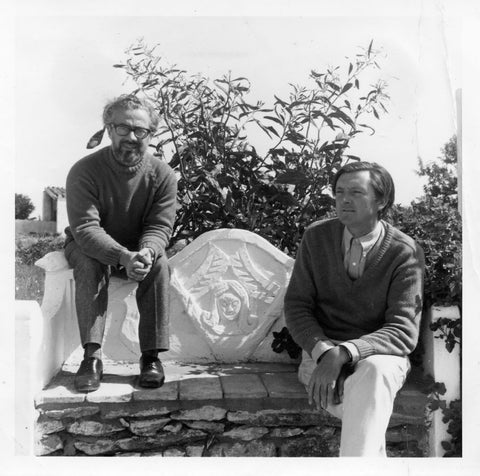
Felizmente começaram o projeto e formaram dezenas de ceramistas, e ao longo do caminho inventaram toda uma mitologia de desenhos e motivos inspirados na herança cultural algarvia. Nunca imaginaríamos que meio século depois a Olaria de Porches seria o centro de um renascimento da cerâmica no Algarve com seguidores em todo o mundo.
Se quiser conhecer a fundo nossa história, nosso livro está disponível aqui.
Quem somos nós hoje?
Somos uma equipa de artistas e artesãos que produzem, vidram e pintam peças de cerâmica de cores vivas. Todos nós aprendemos a vidrar, pintar e cozer a cerâmica aqui na Olaria Porches. A olaria também é uma empresa familiar e trabalhamos juntos sob a direção de Estella Swift Goldmann e Juliet Swift, as filhas mais novas do fundador da olaria, Patrick Swift, o mais recentemente o seu neto Brian Fortune. Ambas as irmãs e o Brian são pintores talentosos e nos lideram tanto artisticamente como nos negócios.
Somos uma pequena comunidade e a maioria de nós trabalha e pinta em Porches há décadas. Somos todos bons amigos, e na verdade muitos de nós até somos parentes! Temos o objetivo comum de preservar e continuar nas tradições e no espírito que Patrick e Lima inicialmente imaginaram .
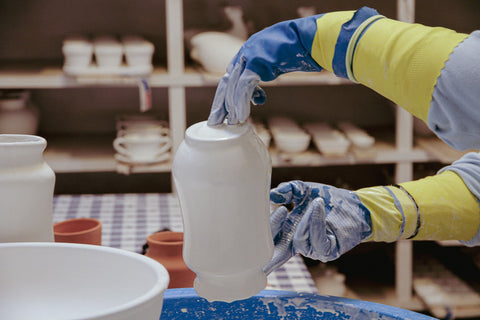
O que é que produzimos?
Juntos criamos cerâmica e azulejos de alta qualidade, feitos manualmente, vidrados e pintados à mão. Utilizamos a antiga técnica da majólica que tem mais de mil anos. Na prática, isto significa que as peças de barro vermelho feitas à mão pelo nosso oleiro, são mergulhadas à mão num vidro opaco, branco e depois decorámo-las à mão livre com pinceis antes de aplicar um vidro transparente final. Colocamos as peças nos nossos fornos e, alguns dias (e pouco mais de mil graus) depois, surge a nossa cerâmica colorida e inconfundível.
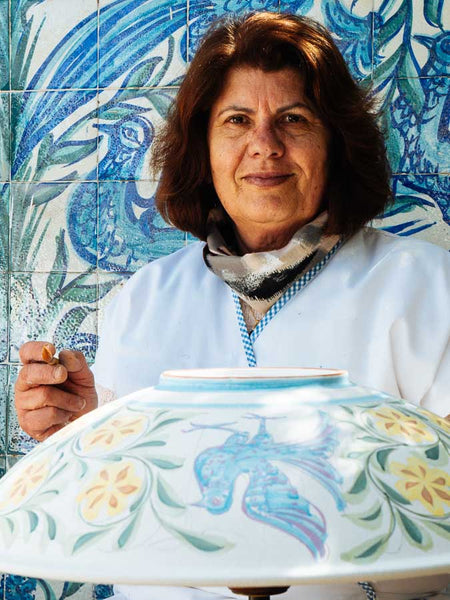
Esta é uma atividade artística que cria cerâmicas intrigantes e únicas. A pincelada de cada pintor é inconfundível no seu trabalho, como uma assinatura. Na verdade, é possivel reconhecer um pintor pelas pinceladas, com a mesma facilidade com que o reconheceria pela voz. Isto só acontece porque não usamos truques ou atalhos, pintamos tudo à mão sem moldes, esponjas ou decalques. Este é um processo humano e cada vaso ou azulejo pintado à mão é uma pequena obra de arte. Isso não quer dizer que a nossa louça não seja absolutamente funcional, é feita de acordo com os mais altos padrões e pode ser utilizada com total confiança.
Saiba mais sobre nosso processo aqui.
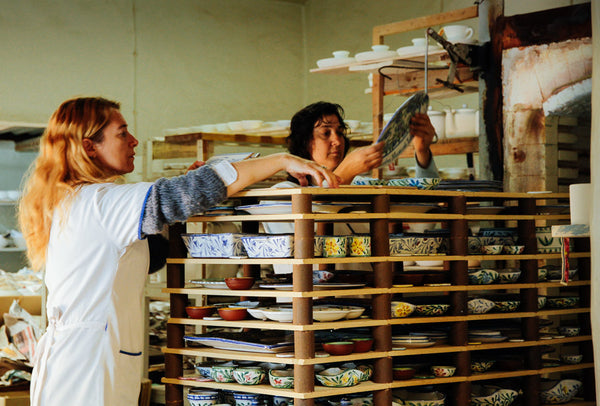
Visite uma olaria em funcionamento
Se visitar a nossa loja irá descobrir o nosso pequeno mundo de potes e azulejos e, muito provavelmente, verá a nossa cerâmica a ser pintada. Possivelmente poderá se apaixonar por algo que vê e poderá começar sua própria coleção de Cerâmica de Porches, juntando-se a gerações de colecionadores em todo o mundo. A seguir, poderá almoçar no café Bar Bacchus, situado nos nossos encantadores jardins.
Estamos orgulhosos por ter recebido o 'Certificado de Excelência' do TripAdvisor todos os anos desde 2016, com base nas avaliações e experiências dos nossos visitantes. Também recebemos o seu mais novo prémio, o prémio 'Traveller's Choice'.
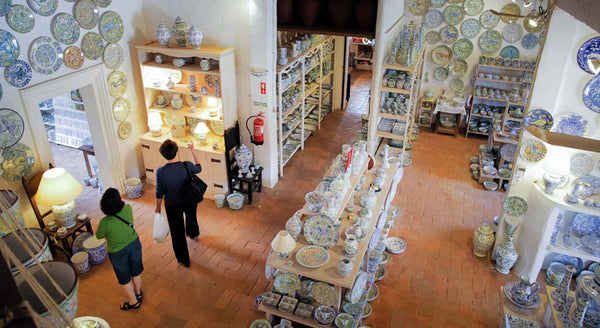
Dando as boas-vindas ao mundo inteiro na rede mundial da internet
Continuamos a expor a maior parte do nosso trabalho na loja da Olaria de Porches , mas é com grande satisfação que recebemos cada vez mais pessoas através do nosso site. Nos últimos anos, temos vendido o nosso trabalho online e agora enviamos cerâmica para todo o mundo, de forma segura e em tempo útil.
Os desafios de gerir um verdadeiro negócio artesanal no mundo moderno são muitos. O nosso site é uma resposta para alguns desses dilemas. Lançamos este novo site, e esperamos que seja mais fácil de usar e mais atualizado. Introduzimos uma seleção de peças especiais no nosso site que captura melhor a grande variedade de vasos e peças completamente únicos que fabricamos. E atualmente compartilhamos o nosso trabalho regularmente nas redes sociais, como Facebook e Instagram . Tudo isso ajuda a manter uma navegação tranquila em tempos difíceis e nos permite conectar-nos com um mundo novo e interessante de clientes e colecionadores.
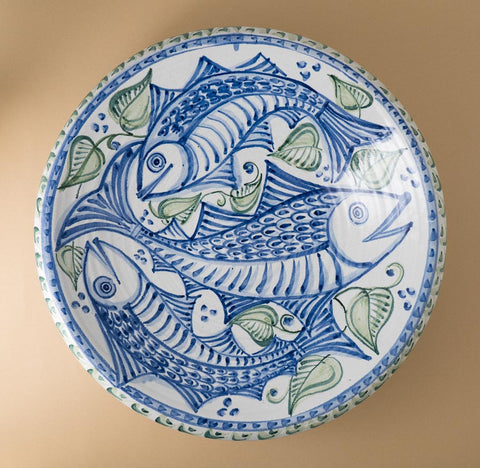
Quer que nos encontre online ou nos visite pessoalmente, esperamos poder ajudá-lo a começar a sua própria coleção de Olaria de Porches, ou a encontrar um presente especial para uma pessoa querida, mas acima de tudo esperamos que tenham prazer em descobrir o nosso trabalho.
